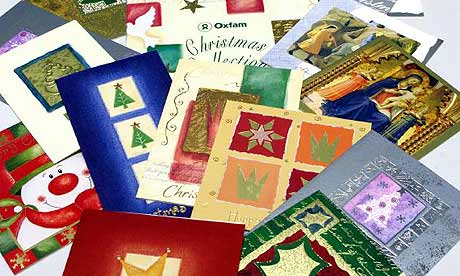
The annual Christmas card recycling scheme, launched by the Woodland Trust and Recycle Now, is aiming to collect 100m cards and raise enough money from them to plant 24,000 trees.
The cards will be taken to paper mills where they will be recycled into new paper products, and the money raised will be used to help the Woodland Trust plant thousands of new trees throughout the UK.
Converting the cards into other paper products and saving them from landfill will also save around 2,600 tonnes of greenhouse gases - equivalent to taking 800 cars off the road.
The Department for the Environment, Food and Rural Affairs (Defra) estimates that 1bn Christmas cards - 17 for every woman, man and child - end up in bins across the UK each Christmas. Generally, one-fifth of the contents of a household's bin is paper and card that could be recycled.
Converting timber into paper is a very energy intensive process, but recycling paper and card conserves resources and saves energy.Recycling is one new year's resolution that is easy to make and keep.
Christmas cards are one of the easiest things to recycle after all the festivities have ended and people will not only be helping to support the Woodland Trust but helping to tackle climate change too.
The UK is one of the least wooded countries in Europe - just 12% of the UK is covered by woods compares to the European average of 44%.By recycling your cards, you can help plant thousands more throughout the UK.
The Woodland Trust does not receive any income directly from scheme. The money comes from recycling credits, paid by local authorities for waste that does not have to be disposed of in landfill sites.
In the last 10 years since the Woodland Trust has been involved with the Christmas card recycling scheme, it says that over 444m cards weighing over 8,764 tonnes have been recycled, helping to create and care for new native woods across the UK.
Last year the scheme collected 93m cards, raising £100,000 for the charity and enabling it to plant 22,000 trees.